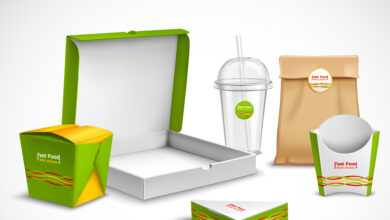5 Benefits of Circularity on Your Business

The circular economy model has a range of environmental and economic benefits. Simply put, in such an economy, the consumption of materials and resources is circular instead of linear. It means the resources are reused and returned to the economy instead of being thrown away.
You can make substantial social and economic leverage by introducing Circularity in your business model. It could mean job creation, saving billions, and reducing greenhouse gas emissions.
If you’ve not yet considered a change in your business model, it’s high time you should reconsider. Check the following benefits to learn how the new model can impact your business.
- Reduce use of non-renewable resources
Brands have been warned for a long time about the dangers of overusing non-renewable resources, as such a practice is non-sustainable. Instead, it is crucial to reuse resources, refurbish old products, and make them a norm.
For example, if you use regenerative materials like wool, the garments provide pathways for recycling and reusing. Also, wool is biodegradable, increasing a product’s lifespan and reducing its environmental impact. This way, you can promote zero waste and efficient resource utilisation.
- Lower carbon emissions
Production and disposal of materials contribute to the majority of greenhouse gas emissions. Implementing Circularity in the business model will help you minimise emissions as it emphasises sustainable material management.
Therefore, you can reduce your carbon footprint when you manage materials more efficiently, encourage using sustainable resources and resort to sustainable practices.
- Minimise wastage
Reusing of products and materials is focused on reaching zero waste. Zero waste benefits businesses, society, and the economy at large.
When you generate less waste, there is less trash in the water bodies, fewer landfills and ocean-bound plastics. Further, emphasising zero waste means you have less need to exploit finite resources.
The circular economy model also encourages growth and organisational productivity, which can be ideal for the business while fulfilling environmental goals.
- Consumer satisfaction and benefits
The textile industry largely depends on an opaque and fragmented supply chain for raw materials. Modern consumers like to align their lifestyles and purchases by evaluating ethical credentials and sustainability factors. All these factors will push you to re-evaluate your brand’s purpose and take steps towards increasing customer satisfaction and benefits.
When you introduce Circularity, you can remain committed to your corporate responsibility and pave the ground for stakeholder dialogue for more positive and sustainable changes. You can also encourage practices like renting or leasing items or purchasing used items that are more economical, discarding the concept of planned obsolescence.
Read Also : 4 Common Mistakes to Avoid When Hiring Movers
- Create opportunities
As a business, you can leverage the benefits of the circular economy model in many ways. You can create job opportunities in various business processes like collecting used resources or refurbishing old materials.
You can also enjoy having a steady supply of resources by reusing what you already have and reducing your dependence on finite resources. This way, you can reduce the cost of materials and help the company run more efficiently.
Modern customers purchase from brands that conduct responsible business, and green initiative is an important ideal. Introducing a new business model can widen the customer base and improve customer loyalty.
Adopting a circular economy is the call of the hour, as a linear economy isn’t sustainable in the longer run. Therefore, by adopting changes in the business model, you can gain a competitive advantage over other businesses that follow an outdated old business model. You also get customers’ vote of confidence as they have an inclination towards more sustainable and responsible businesses and making well-planned consumption decisions.




